
[309] Santolina chamaecyparissus, Lavender-cotton
Introduction
Santolina chamaecyparissus, Lavender-Cotton or Cotton Lavender, is an ornamental garden plant that has the distinction of being named from four different plants that are unrelated to it.
It isn’t Lavender; it isn’t Cotton; it isn’t the plant commonly called Santolina; and it is isn’t Chamaecyparis. Only one of those four has a relatively close relationship.
So, to continue with my usual initial remarks. Santolina chamaecyparissus should not be confused with [199] Lavender or with Cotton, Gossypium hirsutum (and three other species of Gossypium) widely cultivated to make cotton thread and garments.
It should also not be confused with Artemisia cina, a close relative of [041] Mugwort that has the common name Santolina and, despite is name, it is nothing like Chamaecyparis, a kind of cypress or false cypress. (See [190] Juniper.)
Taxonomy
Kingdom – Plants
Division – Vascular Plants
Class – Angiosperms (Flowering Plants)
Order – Asterales
Family – Asteraceae (30 000 species)
Subfamily – Asteroideae
Supertribe – Asterodae (About 20 000 species in 1 000 genera)
Tribe – Anthemideae (2 000 species)
Subtribe – Santolininae
Genus – Santolina
Scientific Name – Santolina chamaecyparissus
Many cultivars are available
Name
It does have a visual similarity with Lavender. It has a soft feel to the touch that could be associated with cotton. But there are no botanical reasons for its name. It often easier to trace the etymological roots for the name than to actual find out why those roots have been used.
Santolina is an altered form of Santonica, the common name of a herb (now called Seriphidium cinum or Artemisia cina) that derives its name from the Santoni, people of the region of Aquitania in France. Again, I can’t say why this name has been used. The visual similarity with either Cypress or Chamaecyparis is very tenuous.
Description
I have mention Asteraceae before. It is a large and complex family divided into subfamilies, supertribes, tribes and subtribes. About a thousand of its 30 000 species may be found in the UK including many that are not native.
Santolina chamaecyparissus is a small evergreen shrub densely covered with very small grey-green leaves.
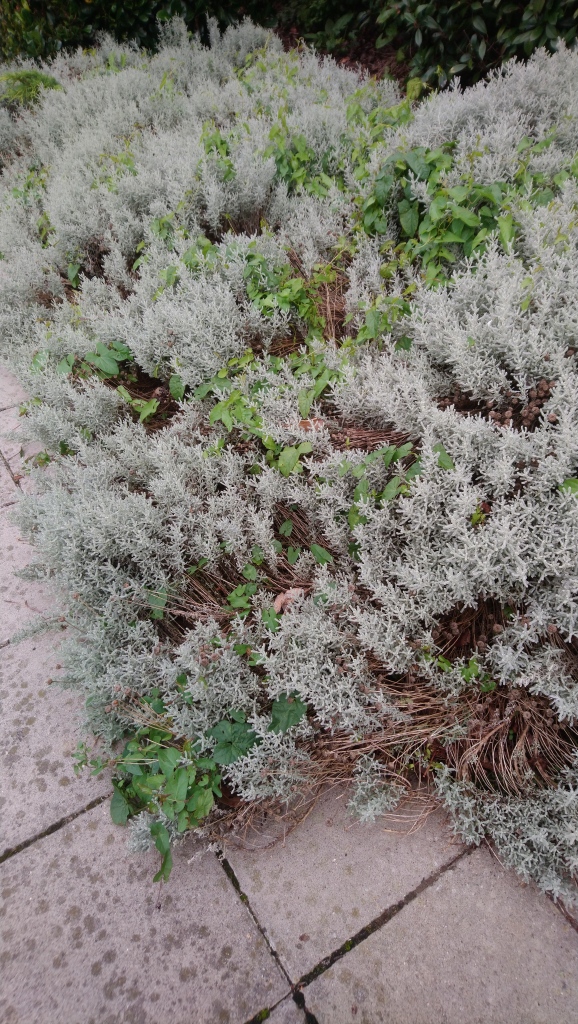


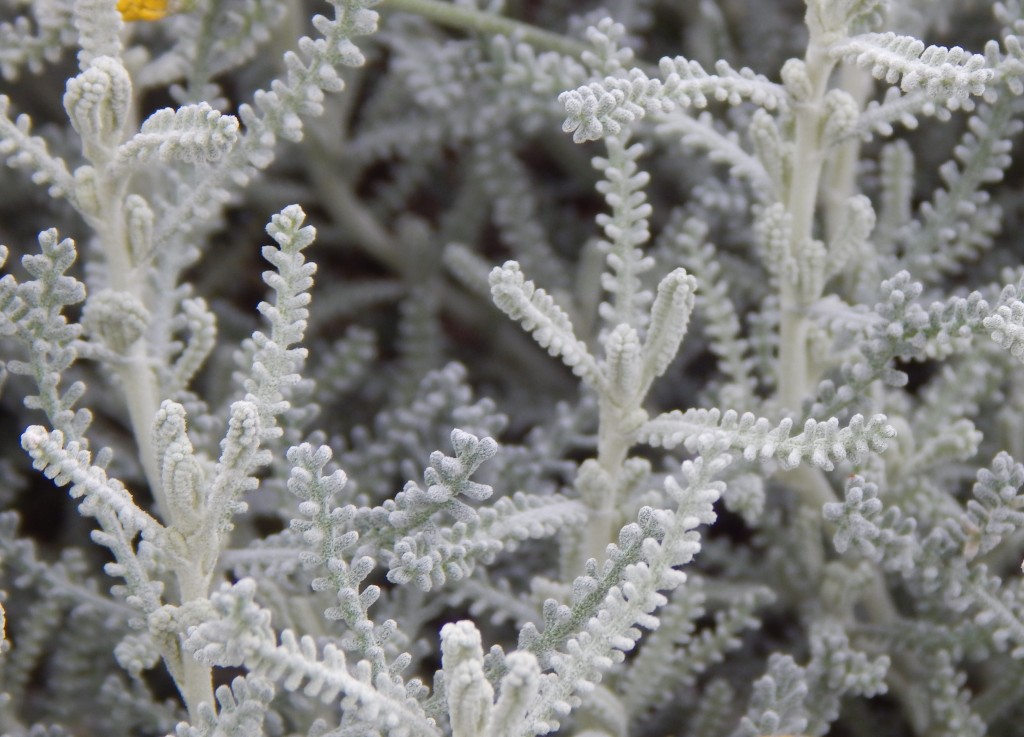



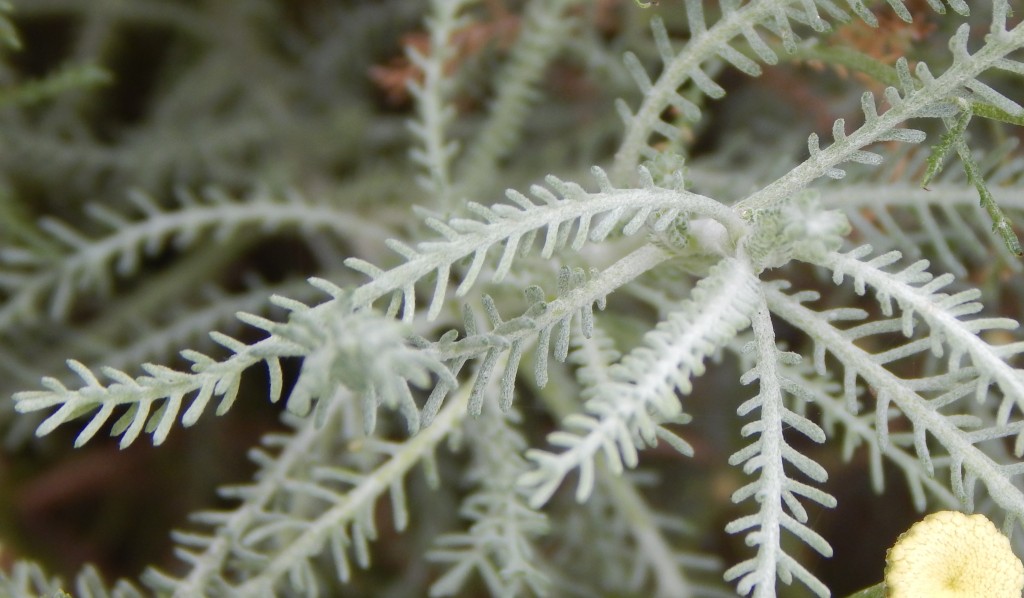
The inflorescences are small and yellow. As a member of the Aster family it has tubular disc florets but no ray florets.


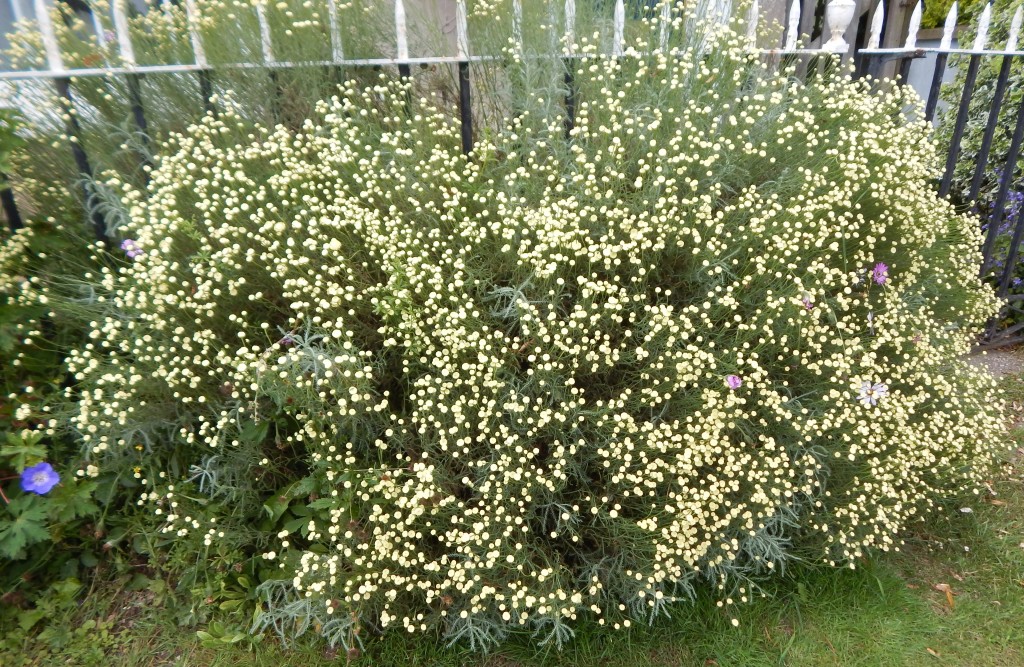

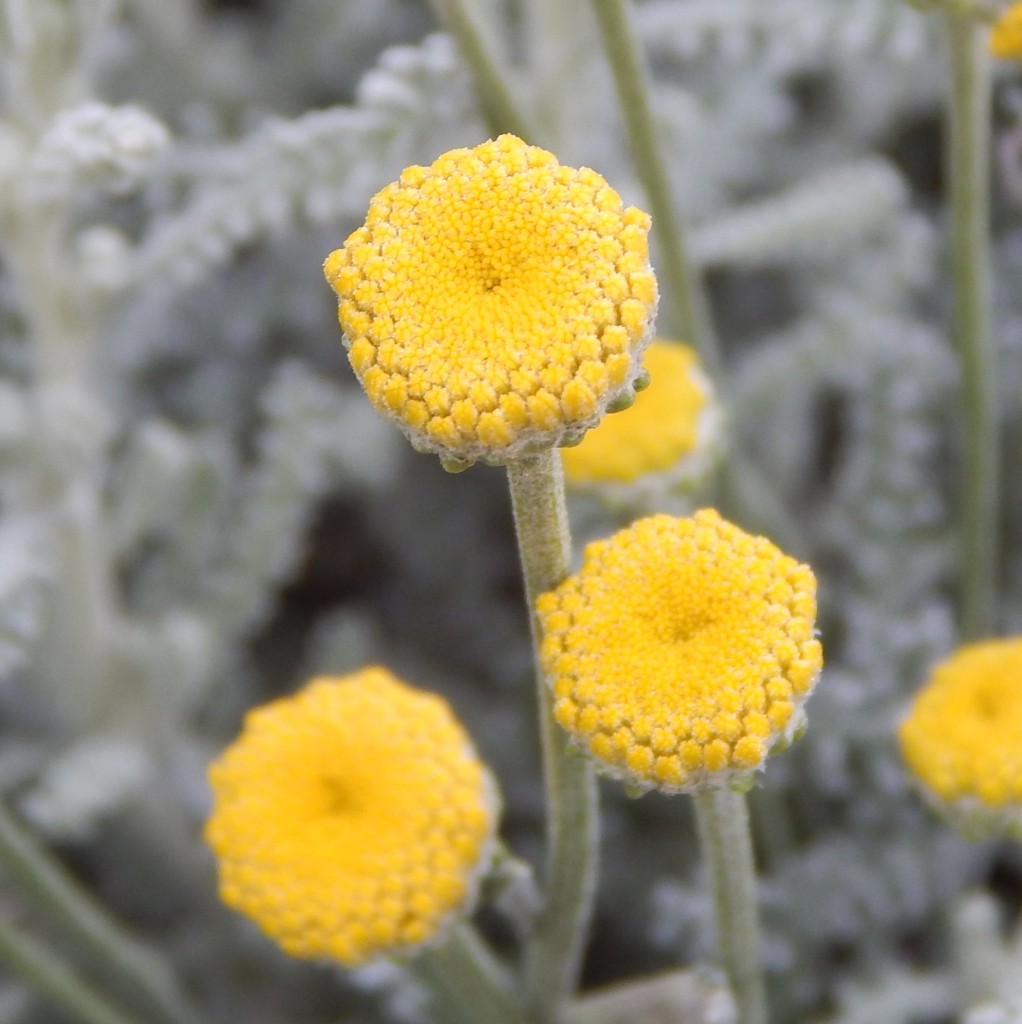

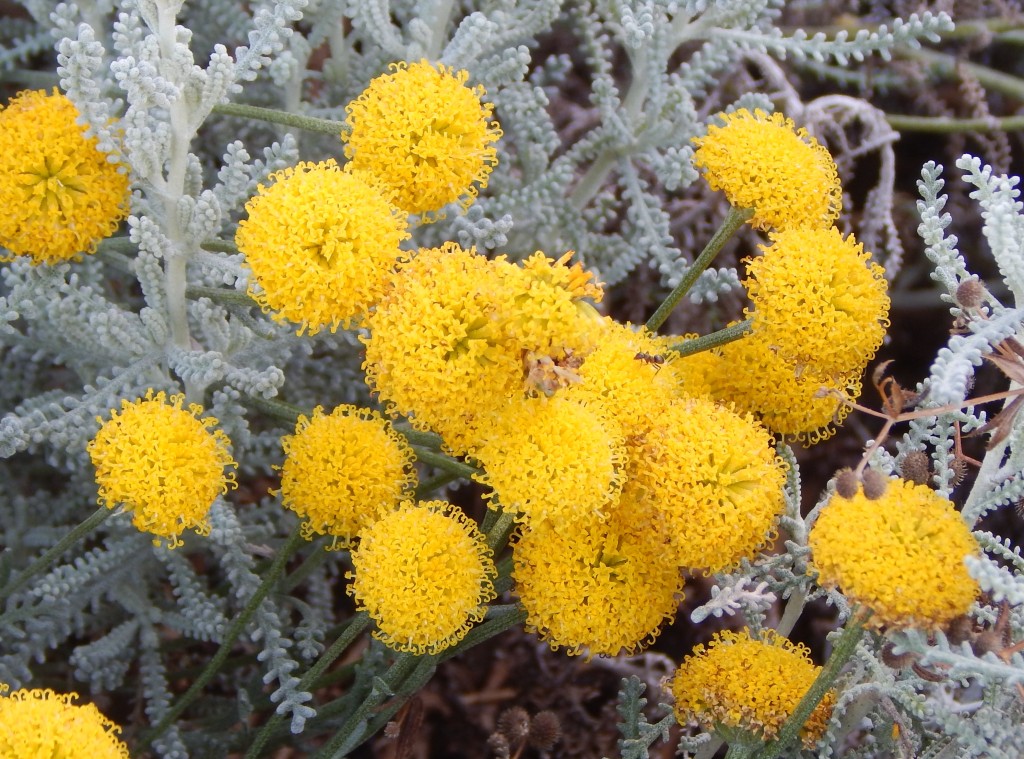
Habitat and use
Lavender-cotton is native to the western and central Mediterranean area.
It is available as a cultivated ornamental garden plant, often cultivated for ground-cover or as an edging plant.

For most of the year it is an attractive foliage plant and the flowers may not be noticed. Some cultivated varieties have inflorescences from white to dark yellow.
Other Notes
I think of this as a common hedge plant because ai see it every day in the gardens around where I live. It is probably more accurate to say that is the low growing part of a hedge made from taller plants. And it may not be common elsewhere.
When I put in the link to Mugwort above, I noticed that [040] and [041] are slightly out of alphabetical sequence. There is no easy way to fix this without leaving some awkward cross-links, so I have left it. You can have hours of fun looking for another pair in the same circumstances.
See also
I don’t want to suggest that all the 20 000 species in Asterodae are similar but here is one from another tribe, Gnaphalieae. It’s Helichrysum italicum, known as the Curry Plant because it smells a lot like curry.



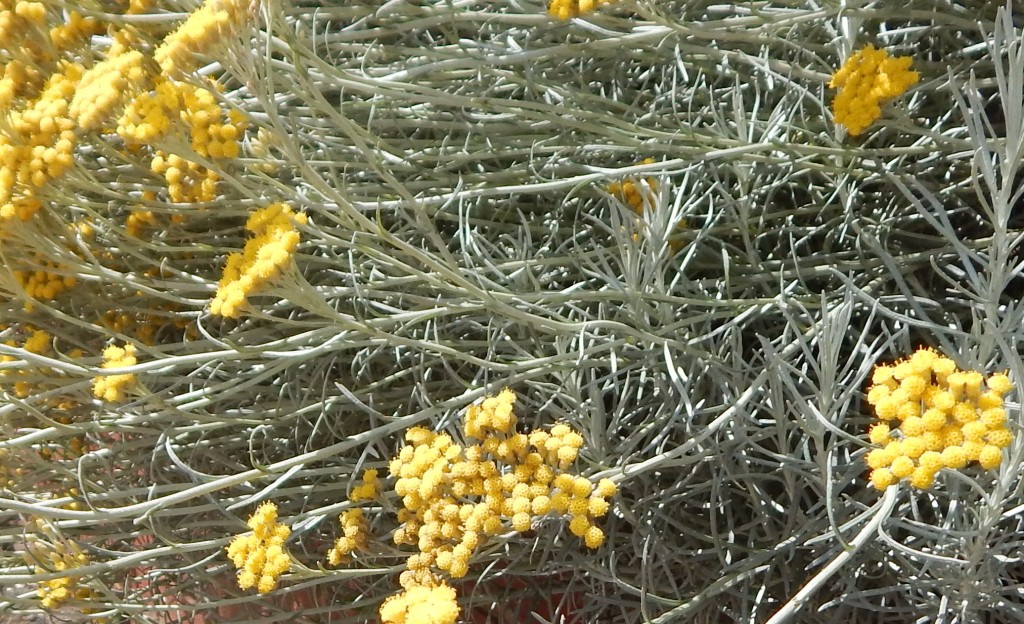
Also known as Italian Strawflower, its flowers look very similar to Lavender-cotton but the stems and leaves are different.
Not surprisingly it comes from the Mediterranean (including Italy!) but is cultivated as an ornamental garden plant. Varieties may have large flowers or flowers of different colours.
